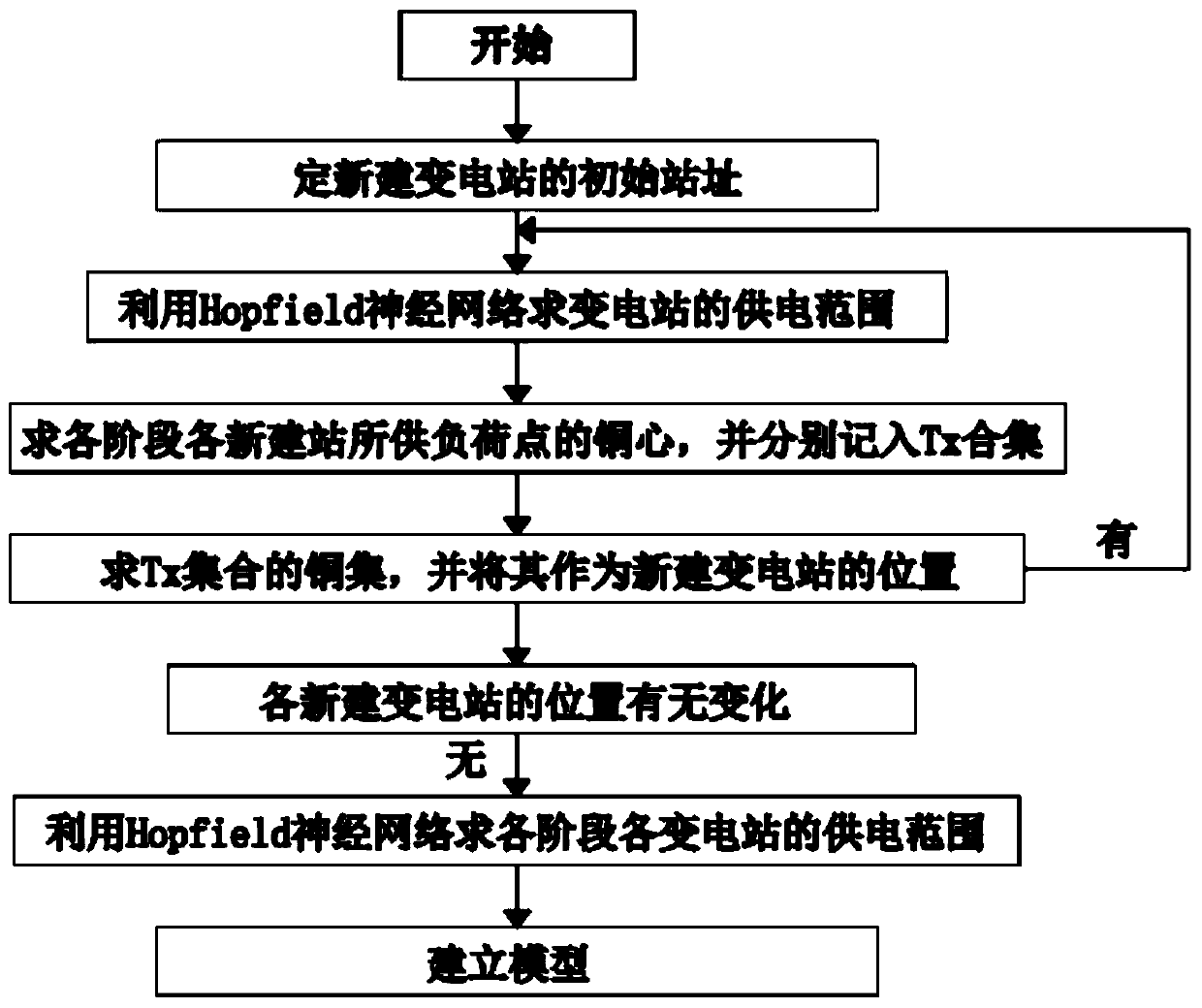Power system planning method based on machine learning
A power system and machine learning technology, applied in the field of power system, can solve problems such as combinatorial explosion, iterative divergence, wrong substation search direction, etc., to achieve the effect of reducing instantaneous power, high execution efficiency, and saving user electricity expenses
- Summary
- Abstract
- Description
- Claims
- Application Information
AI Technical Summary
Problems solved by technology
Method used
Image
Examples
Embodiment 1
[0040] Embodiment 1, see figure 1 , the present invention provides a technical solution: a power system planning method based on machine learning, using the greedy method to determine the number of new substations and the capacity of each substation, on this basis, using the Hopfield neural network algorithm to solve the location of the new substation and The power supply range of each substation at each stage, and then reduce the capacity of the substation according to the actual power supply situation of each substation, and finally determine the optimal solution that satisfies the optimal solution and establish a model and optimize it; including the following steps;
[0041] Step 1. Determine the number of new substations and the capacity of each substation through the greedy method;
[0042] S1. Set the capacity of existing substations as the capacity with the greatest cost performance in the set of optional station capacities; S2. Initialize the number of new substations ...
PUM
 Login to View More
Login to View More Abstract
Description
Claims
Application Information
 Login to View More
Login to View More - R&D
- Intellectual Property
- Life Sciences
- Materials
- Tech Scout
- Unparalleled Data Quality
- Higher Quality Content
- 60% Fewer Hallucinations
Browse by: Latest US Patents, China's latest patents, Technical Efficacy Thesaurus, Application Domain, Technology Topic, Popular Technical Reports.
© 2025 PatSnap. All rights reserved.Legal|Privacy policy|Modern Slavery Act Transparency Statement|Sitemap|About US| Contact US: help@patsnap.com

